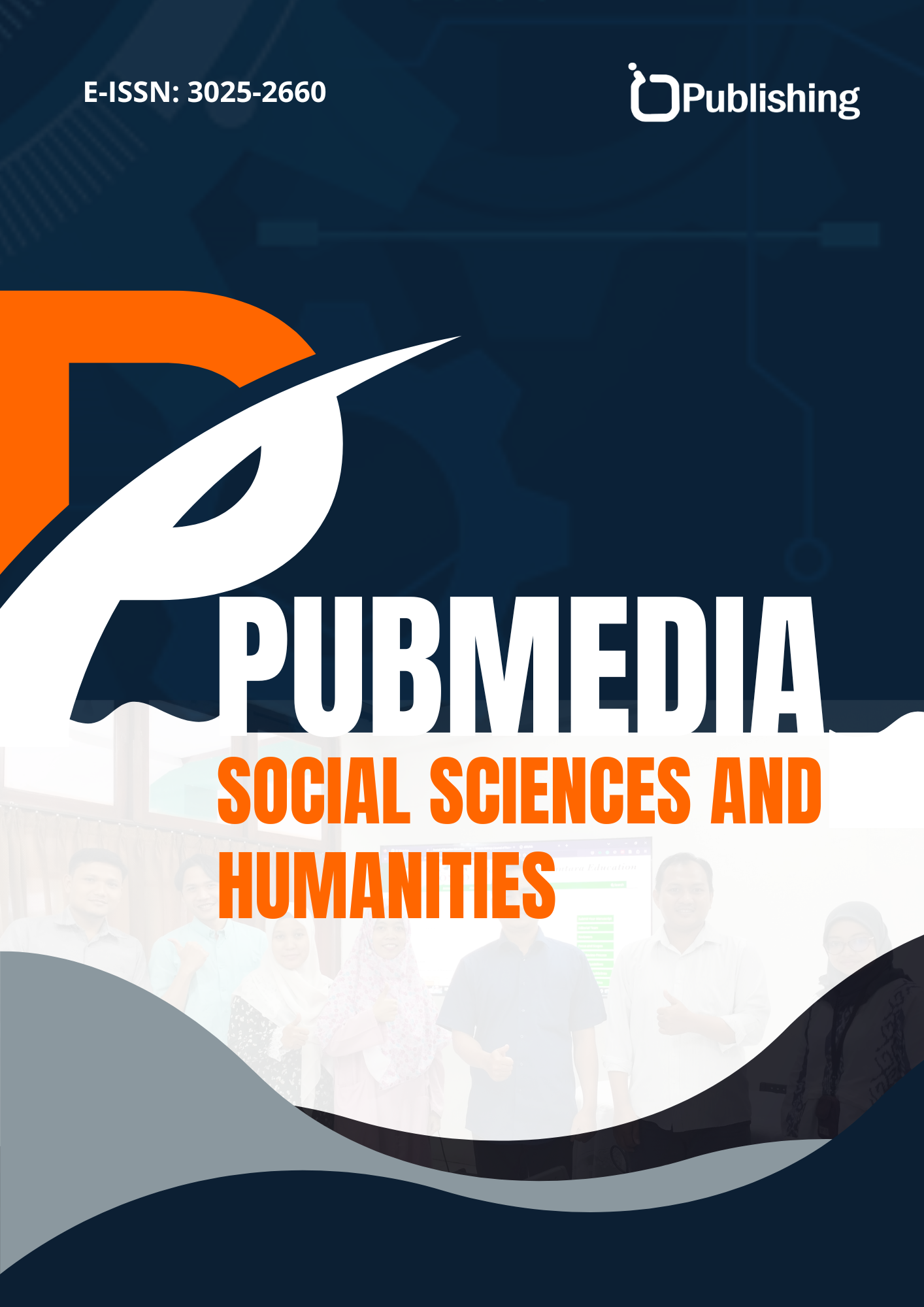The Impact of Arabic Dialects on The Content and Stylistic Features of Literary Texts: A Historical ond Contemporary Analysis
DOI:
https://doi.org/10.47134/pssh.v2i3.356Keywords:
Arabic Dialects, Literary Language, Linguistics, Literature, Cultural Identity, Egyptian Dialect, Levantine Dialect, Naguib Mahfouz, Al-Tayyib Salih, Youssef ChahineAbstract
This article examines the impact of Arabic dialects on the content and stylistic features of literary texts. It analyzes the historical roots of dialects, their connections with local cultures, and their significance in contemporary literature from linguistic and literary perspectives. The study provides examples of dialectal characteristics, their integration with poetic and prose works, and the objectives of writers in employing these features. The research opens new directions in the fields of linguistics and literary studies.
References
Abdullatif, A. K. A. (2024). The Dialect of (fleas ate me) “Aklooni Al-Baragheeth” and Its Impact on the Arabic Language. Pakistan Journal of Life and Social Sciences, 22(2), 8240–8252. https://doi.org/10.57239/PJLSS-2024-22.2.00624
Abu-Lughod, L. (1989). Before European Hegemony: The World System A.D. 1250-1350. Oxford Al-Sanea, R. (2005). Girls of Riyadh. London: Penguin Books.
Adonis. (1985). Al-A‘mal al-Kamila. Beirut: Dar al-Adab.
Al-Qushayri, A. (2015). Latāif al-Ishārāt. Cairo: Dar al-Fikr.
Al-Wer, E. (2002). Language and Identity in the Arab World. Routledge.
Bar-Moshe, A. (2022). The short vowel system of the Jewish Arabic dialect of ʿĀna A struggle between phonetic and historical developments. Zeitschrift Fur Arabische Linguistik, 76(2), 50–72. https://doi.org/10.13173/zal/2022/76/4
Dahou, A. H. (2023). Impact of Normalization and Data Augmentation in NER for Algerian Arabic Dialect. Lecture Notes in Networks and Systems, 593, 249–262. https://doi.org/10.1007/978-3-031-18516-8_18
D’Anna, L. (2020). The Arabic Dialect of Chebba Preliminary Data and Historical Considerations. Zeitschrift Fur Arabische Linguistik, 72(1), 80–100. https://doi.org/10.13173/zeitarabling.72.0080
Ibn Khaldun. (1377/1967). Al-Muqaddimah (Translated by F. Rosenthal). Princeton University Press.
Mahfouz, N. (1966). Zuqaq al-Midaqq. Cairo: Maktabat Misr.
Micallef, K. (2023). Exploring the Impact of Transliteration on NLP Performance: Treating Maltese as an Arabic Dialect. Proceedings of the Annual Meeting of the Association for Computational Linguistics, 22–32. https://www.scopus.com/inward/record.uri?partnerID=HzOxMe3b&scp=85174835018&origin=inward
Procházka, S. (2019). A functional analysis of the particle ṛā- in the Arabic dialect of Tunis. Zeitschrift Fur Arabische Linguistik, 70(1), 44–72. https://doi.org/10.13173/zeitarabling.70.0044
Rezig, O. (2024). Information Structure: The Impact of Pragmatic Focus Categories on Word Ordering in the El Tarf Dialect of Algerian Arabic. Jordan Journal of Modern Languages and Literatures, 16(3), 609–625. https://doi.org/10.47012/jjmll.16.3.3
Shachmon, O. (2022). The derivatives of Barth’s Law in the light of modern Arabic dialects. Bulletin of the School of Oriental and African
Studies, 85(3), 333–353. https://doi.org/10.1017/S0041977X22000866
Salih, T. (1969). Mawsim al-Hijra ila al-Shimal. Beirut: Dar al-‘Awda.
Shaheen, Y. (1989). Al-Masir [Film]. Cairo: Misr Studios.
Sibawayh, A. (1988). Al-Kitāb. Cairo: Dar al-Hilal.
University Press.
Versteegh, K. (2014). The Arabic Language. Edinburgh University Press.
Wright, W. (2002). Arabic Dialects and Sociolinguistics. Cambridge University Press.







